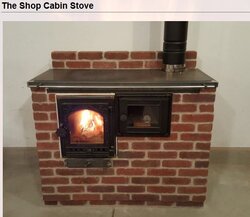Building a small cabin out in the backwoods. We have about 13 feet from the top of a brick masonry heater/cookstove to a cathedral ceiling where we have a ceiling support box installed and connected to Class A insulated triple wall pipe going up and outside the roof.
The question I have is regarding the pipe going from stove up to the support box. Woodland direct want to sell me 500 bucks of double wall pipe since I have more than 8 feet of pipe going to the ceiling.
Is this really necessary, or can single wall pipe work? If it is, why? in our case code is not an issue, just a stove that works.
I have heard of folks using single wall in tall barn ceilings, they seem to be doing fine. Heck, some just use old solid steel pipe from a construction site, why is a house physically so much different?
The question I have is regarding the pipe going from stove up to the support box. Woodland direct want to sell me 500 bucks of double wall pipe since I have more than 8 feet of pipe going to the ceiling.
Is this really necessary, or can single wall pipe work? If it is, why? in our case code is not an issue, just a stove that works.
I have heard of folks using single wall in tall barn ceilings, they seem to be doing fine. Heck, some just use old solid steel pipe from a construction site, why is a house physically so much different?



